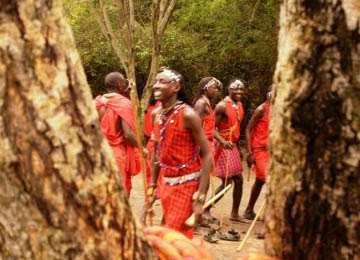Death is of course an all to familiar concept to most people. But as I might be used to going to someone's funeral when they pass away, others might think differently. Not all cultures believe in burying the dead in the ground. It is so easy to think that everyone believes in the same practices and deals with issues like death, morals, marriage and raising children in the same way. Yet, looking at something such as burials around the world, I was reminded once again that we need to become aware of everyone's way of doing things, in order to become more tolerant of those around us and around the world. Ignorance can so often result in prejudice, which is why this blog strives to encourage the celebration of difference. Here are some unique burial ceremonies from around the world.
Fire
On the mostly Hindu Isle of Bali, fire represents the path to the next life. The body or Mayat is bathed first and then laid down on a table. Those attending the funeral then place food and other offerrings next to the body to take with on the journey that lies ahead.
Cave
In the Hawaiian Islands, a traditional burial involves being placed in a cave. The body is laid down in the fetal position covered with cloth, usually made from mulberry bush. Many caves in Hawaii still contain these skeletons, particularly along the coast of Maui.
Predator
To the Maasai people, when you are dead, you are completely gone. They don't believe in any form of afterlife or burial. Burial is usually only reserved for chiefs as a sign of respect. The 'common people' are simply left outdoors for predators to dispose of, since the Maasai believe that dead bodies are harmful to the earth.
Sky
In certain areas of Tibet, the deceased is dismembered by a rogyapa, or a body breaker, and left outside, similar to the Maasai people. This is believed to be the perfect Buddhist act, known as Jhator. They believe that the body, when deceased, is worthless, the dead body becomes useful in that it provides sustenance to the birds of prey that are the primary consumers of its flesh.





No comments:
Post a Comment
Note: Only a member of this blog may post a comment.